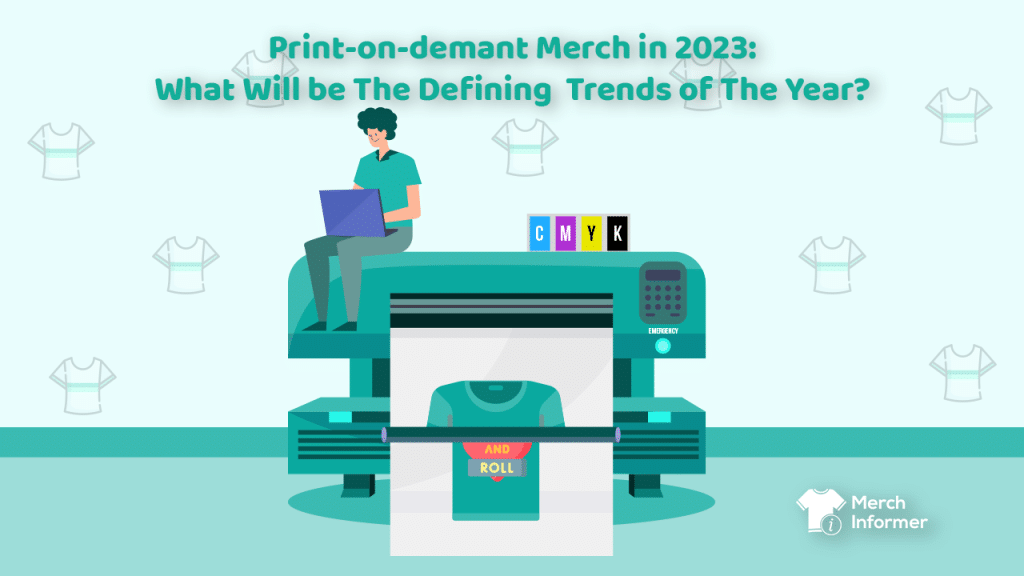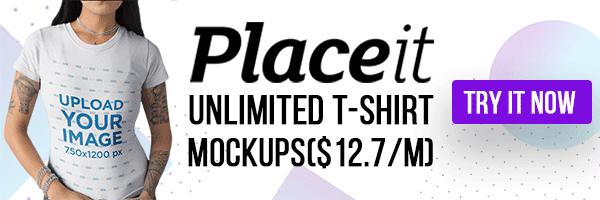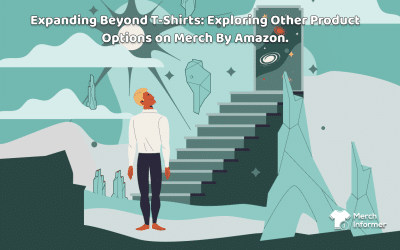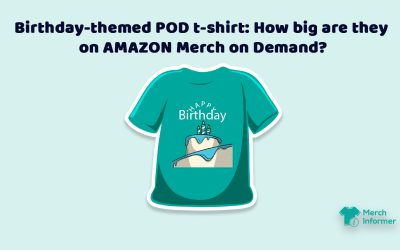Print-on-demand merch in 2023: What will be the defining trends of the year?
Ever since print-on-demand (POD) emerged as an order fulfillment method, the industry has only been gaining momentum. And with players such as Amazon and its Amazon Merch on Demand platform coming to the fore, it is poised to accelerate.
With 2022 behind us already, it’s time to look into the future. If you’re a POD merch seller and you’d like to find out what trends have already defined and which ones will define the industry during 2023, take a look below.
What are the POD trends that defined the year 2022?
Before we look at the industry’s defining trends in the last year, let’s rewind back to 2021. It is estimated that the global POD market was valued at $4.91 billion. This was expected to reach $6.17 billion last year. That’s a nearly $2 billion-valued growth. Impressive, indeed. But if we start segmenting the industry further, we start noticing that the 2021 POD industry was dominated by the apparel segment at 39.6%.
As such, we’re looking at major global players such as Amazon Merch on Demand dominating the marketplace with unique designs, competitive prices and excellent customer service. Add streamlined fulfillment through lower printing costs, better tracking, management and operations of the print fleet from one app interface, and you’ve got yourself an industry leader.
But before we get carried away, let’s focus on last year’s trends from a supplier, customer, and seller point of view.
Supplier-driven trends
The world of technology is becoming so advanced that business operations, irrespective of their size and scale, are becoming entirely streamlined. Consequently, profit-affecting aspects such as the oversupply of stock and warehouse fees are now things of the past. So, what did POD suppliers get right in 2022?
Economic stability
Economic stability in the North American, Australian, and European markets was a major driving force for POD suppliers to trim their operations, keep them profitable, and scale them further. The presence of POD manufacturing facilities in these markets was another dominant factor.
Technological infrastructure
This pillar of e-commerce was a major factor, too. Numerous global suppliers upped their game and invested in customer-convenience. They’ve also boosted their offering for mobile users to cater to growing demand and smartphone usage.
Digitization and integrated software
Speaking of technology, integrated software grew in popularity, too. Third-party e-commerce platforms were able to easily connect customers to suppliers through greater flexibility, computing power, and cost-efficiency.
All this took place as e-commerce rose to prominence, enabling online sales with ease, speed, and higher levels of convenience. Application Programming Interfaces (APIs) also became focal points as they increased suppliers’ ability to integrate their online stores with a POD platform.
Wider offering
How Does Amazon Merch on Demand Compare To Other Print-On-Demand Platforms?
POD suppliers also expanded their portfolio of services to move away from just fulfilling orders through printing and shipping. They also now offer branding and marketing services such as custom packaging, graphic design, photography, and others.
Customer-driven trends
On the customer side, what role did consumers play in the POD market in 2022? Let’s explore.
A great shift toward fashion apparel
Primarily targeted at the tech-savvy younger generation, there was a rising shift toward online retail in terms of fashion. What’s more is that younger consumers are increasingly looking for custom products, driving the trend for unique apparel.
Greater environmental awareness
It’s no secret that consumers nowadays are looking for eco-friendly options when making purchasing decisions. The rising awareness of the harmful practices of the “fast fashion” industry is becoming ever-more prevalent.
Print on demand is an excellent rebuttal to that because modern printing technology requires around 90% less water, 30% less electricity, and of course, there is no oversupply of products to speak of.
Seller-driven trends
As for seller-driven trends, we identified two that rose to prominence last year. Here is what we discovered.
Seller convenience
Many artists who have unique apparel products or designs to showcase often look for a combination of factors to drive their sales. These factors include platforms that aren’t too “techy”. Supplier platforms are in turn adapting to seller demand, and focus on convenience and ease of use.
The great resignation
The “great resignation” throughout 2022 was characterized by hordes of professionals leaving their full-time jobs in the search for something new, self-directed, achievable, and profitable.
This trend resulted in many people looking for side-gigs to earn a passive income whilst investing as little time on the project as possible. With POD offering just that, the “great resignation” was another major driving force getting more sellers on POD platforms.
What are the POD trends expected to define the industry in 2023?
Looking into our crystal ball, what does the current year hold for the POD industry?
We believe there’s great potential for continued growth, with the following trends worth looking out for.
Search interest
Search interest for POD rose to great heights during the Covid-19 pandemic. However, it does not appear to have reached its peak yet. We are expecting to see more sellers entering the space, as well as more consumers. In addition to this, POD platforms are expected to cater to growing customer demand for great customer service and convenience. And pricing is expected to remain competitive.
Demand for custom products
Hyper-personalization driven by customer demand is also expected to make an entry and continue being a major driving force that influences the type and design of apparel. Micro-niches will be a major driver in the POD market in 2023. Buyers are also expected to boost demand for sustainable products, packaging, and shipping.
More sellers looking for a side income
Because POD offers sellers the ability to earn a steady side income, and combined with the fact that there’s great interest in this industry, more sellers are expected to come on board. A word of caution, though: this could make the POD space even more competitive.
The rise of the Asia Pacific region
We mentioned earlier that North America, Australia, and Europe were markets that dominated the POD space last year. However, the Asia Pacific region is worth looking out for as well. Firstly, it’s expected to see the highest growth rate over the next decade in terms of population size. This population is going to continue gaining internet access, see great smartphone penetration and adoption. As a result, online shopping will become the norm, with new players entering the market. These will be factors that will drive growth.
The way forward
So, how does the future look for POD in 2023? Quite rosy, indeed. Suppliers or sales platforms are expected to up their game by offering convenience on all fronts – tech, customer and seller.
Customers are going to keep driving demand for eco-friendlier printing and fulfillment methods, as well as for unique designs.
As for sellers, there is probably no better time than right now to get started. And of course, with the right software platform, you can easily turn this into a successful side gig. What are we talking about?
Merch Informer, of course. The platform that enables you to gain millions of insights in mere seconds. At only $9.99 per month, it’s the greatest investment you’ll ever make in your very own POD side gig.





